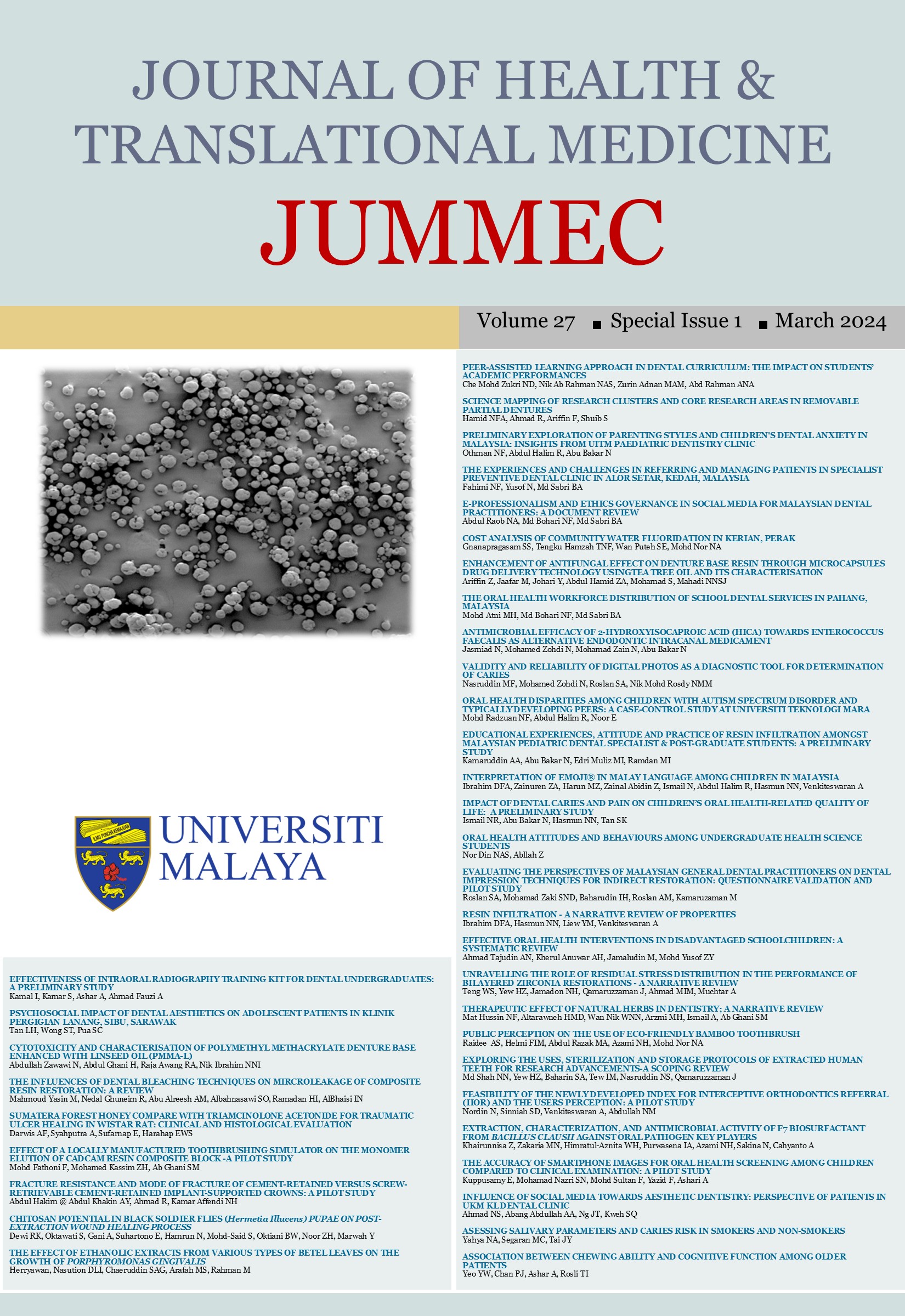PSYCHOSOCIAL IMPACT OF MALOCCLUSION ON ADOLESCENT PATIENTS IN KLINIK PERGIGIAN LANANG, SIBU, SARAWAK
Received 2024-03-01; Accepted 2024-03-05; Published 2024-03-25
DOI:
https://doi.org/10.22452/jummec.sp2024no1.30Abstract
Malocclusion affects dental aesthetics and a person’s psychosocial well-being. Patient’s perspective should be considered while assessing orthodontic treatment need. The objectives of this research were to study the psychosocial impact of dental aesthetics on adolescent patients attending Klinik Pergigian Lanang, and to determine its relationship with self-perceived need of orthodontic treatment, gender, age and race. A cross-sectional study was carried out on 167 adolescents aged 12-17 years visiting Klinik Pergigian Lanang using a self-administered questionnaire. All subjects answered all three sections of the questionnaire that included: demographic information (gender, age, race), Psychosocial Impact of Dental Aesthetics Questionnaire (Malaysian version), and the last section where they self-evaluated their own malocclusion using the Index of Orthodontic Treatment Need – Aesthetic Component. Prevalence and extent of psychosocial impacts were compared with self-perceived malocclusion status using Chi-Square and Fisher’s Exact Test. Severity of impacts was compared using Independent t-Test. Mean scores between age groups and gender were compared using Independent t-Test, whereas ANOVA was used to compare mean scores between races. The overall prevalence of impacts was 95.2% (n=159). Prevalence was highest in Dental Self-Confidence domain, followed by Psychological Impact, Social Impact and Aesthetic Concern. The prevalence in Dental Self-Confidence, Social Impact and Aesthetic Concern domains were significantly higher in patients who reported self-perceived malocclusion (p<0.05). Those with self-perceived malocclusion had significantly higher severity of impacts (p<0.05). Up to 34.7% (n=58) of all subjects reported significant impact on all domains. The difference in extent of psychosocial impacts between subjects who reported self-perceived malocclusion and subjects without self-perceived malocclusion, was statistically significant (p<0.05). 62.4% of subjects with self-perceived malocclusion recorded significant impact in more than 2 domains, whereas 62.1% of subjects who did not report self-perceived malocclusion had significant psychosocial impact in 2 or less domains. Female subjects obtained statistically significant higher mean total scores, and scores for Social Impact and Psychological Impact domains (p<0.05). Higher mean total score in older adolescents was not statistically significant (p=0.151). The effect of race on psychosocial impact was not statistically significant (p=0.101). In conclusion, the prevalence, severity and extent of psychosocial impact of malocclusion on adolescent patients visiting Klinik Pergigian Lanang were high. Those with self-perceived malocclusion had significantly higher severity of impacts.
Downloads
Downloads
Published
Issue
Section
License
All authors agree that the article, if editorially accepted for publication, shall be licensed under the Creative Commons Attribution License 4.0 to allow others to freely access, copy and use research provided the author is correctly attributed, unless otherwise stated. All articles are available online without charge or other barriers to access. However, anyone wishing to reproduce large quantities of an article (250+) should inform the publisher. Any opinion expressed in the articles are those of the authors and do not reflect that of the University of Malaya, 50603 Kuala Lumpur, Malaysia.


